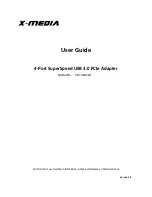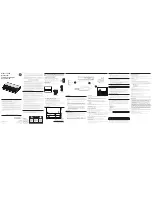
UGM96
ESI
16
-
COMBO
: this position is for a sound more like the smaller practice and stage amps featuring
open-back, single 1x12 configurations. This sound is thinner, more mid-rangy, and “boxier” than
the
STACK
setting.
-
D.I. BOX
: This setting acts like a speaker simulator bypass and basically allows you to shut off
the Studio Devil cabinet to use your own speaker-modeling plug-ins and impulse modelers in host
applications that can chain multiple plugins.
NOISE GATE
section:
since Studio Devil VGA mimics the characteristics of a real tube amplifier,
it also generates the same typical hiss, buzz and other noises that are normal for a tube amp. The
built in noise gate allows you to tame this annoying hiss and gets you the quiet sound you need. The
THRESHOLD
knob sets the level where the noise gate gets activated and the
ON/OFF
switch
generally enables or disables the noise gate.
Please always keep in mind that it is usually best to experiment for some time with the controls to
find just the sound that you like.
6.2 Usage with Cubase LE 4
Studio Devil VGA and Cubase LE 4 are a perfect combination. You can not only use the two
utilities with your UGM96 for jam sessions and performances, you can even record your own multi
track projects right away and use other plugin and effects at the same time.
Make sure that both Cubase LE 4 and Studio Devil VGA are installed and setup like described in
section 5.4 and 5.5. The pictures in this section are from Windows, but the operation under Mac OS
X is exactly identical.
Start by creating a new project in Cubase LE 4. Then add an audio track by click with the right
mouse button into the arrangement window as shown on the following picture:
In the left area, you can assign the input and output channels for this new audio track and under
Inserts
, you can select and load plugins. Select the Studio Devil VGA entry as shown on the
following picture:







































